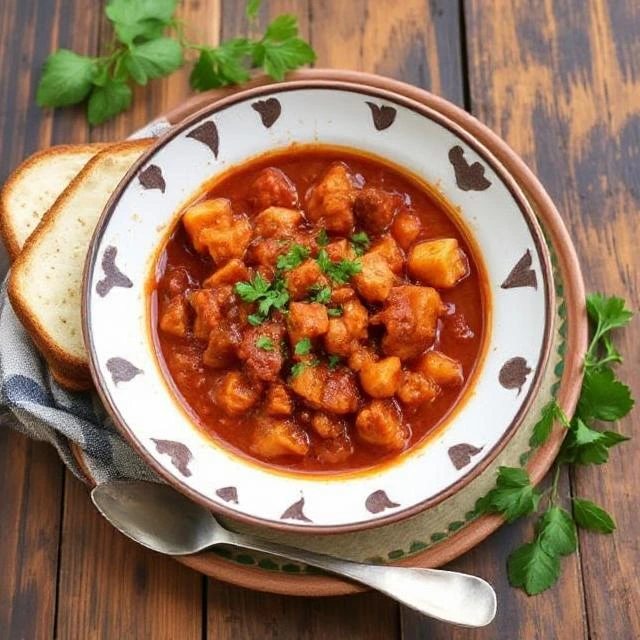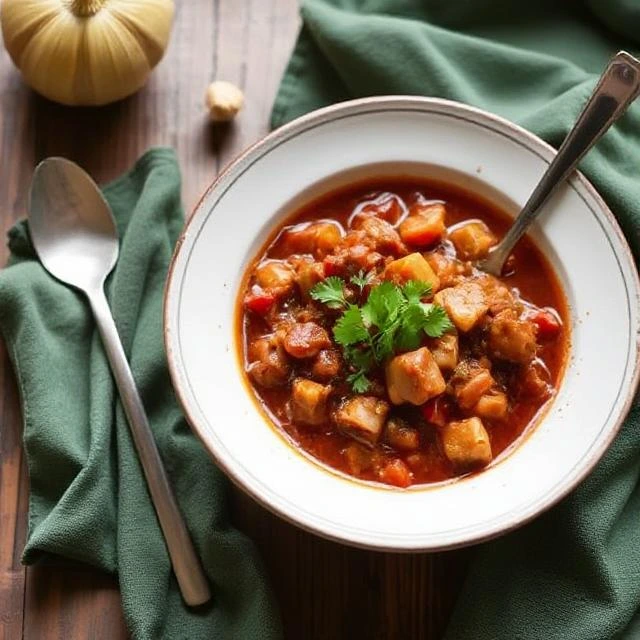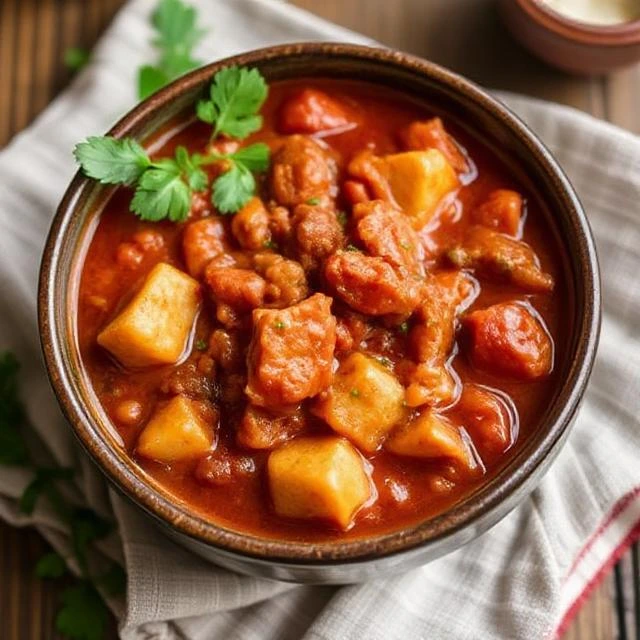Introduction: A Dish That Embodies Hungarian Heritage
Hungarian goulash (gulyás) is more than a meal—it’s a cultural icon. This hearty stew, simmered with tender beef, paprika, and vegetables, has warmed generations and transcended borders to become a global comfort food favorite. Rooted in the traditions of Hungarian herdsmen and refined through centuries, authentic goulash balances simplicity with bold flavors. In this guide, we’ll explore its history, ingredients, cooking techniques, and regional variations while optimizing for SEO to ensure your culinary journey ranks high in search engines.
The History of Goulash: From Nomadic Cauldrons to National Pride
Goulash traces its origins to the 9th-century Magyar shepherds who roamed the Hungarian plains. These herdsmen cooked meat and onions in large iron kettles (bogrács) over open fires, drying the mixture for preservation during long journeys 1810. The dish’s name derives from gulyás, meaning “herdsman” in Hungarian, reflecting its humble beginnings as sustenance for cattle drivers 410.
The 16th-century introduction of paprika—a spice brought from the Americas via Ottoman traders—revolutionized Hungarian cuisine. Paprika became the soul of goulash, replacing earlier seasonings and giving the dish its signature crimson hue and smoky-sweet flavor 110. By the 19th century, goulash had evolved into a symbol of Hungarian identity, resisting Austrian culinary influences during the Habsburg Empire and cementing its place as a national treasure 810.http://“How to Make Chicken Paprikash”

Key Ingredients for Authentic Hungarian Goulash
Authenticity hinges on traditional ingredients and techniques. Here’s what defines a true gulyás:
1. Beef
- Cut: Chuck, shin, or shoulder—tough, marbled cuts that tenderize during slow cooking 312.
- Fat Content: Essential for richness; older cattle beef is prized for its deeper flavor 47.
2. Paprika
- Types: Sweet Hungarian paprika is non-negotiable. Hot or smoked varieties can add heat, but sweet paprika forms the backbone 112.
- Quantity: Hungarians use at least 2–4 tablespoons for depth—never a timid sprinkle 17.
3. Vegetables
- Onions: Caramelized to form a sweet base.
- Bell Peppers: Red or yellow for sweetness; green peppers are avoided for their bitterness 17.
- Tomatoes: Fresh or paste for acidity, though traditional recipes use them sparingly 712.
- Root Vegetables: Carrots, potatoes, and parsnips add heartiness 712.
4. Spices
- Caraway Seeds: Ground for warmth and earthy notes 312.
- Bay Leaves & Garlic: For aromatic complexity 612.
5. Cooking Fat
- Lard: Traditional for depth of flavor; vegetable oil is a modern substitute 312.

Step-by-Step Recipe: Crafting Authentic Goulash
Serves 6–8 | Prep: 20 mins | Cook: 2.5 hours
Ingredients
- 2 lbs beef chuck, cubed
- 3 tbsp lard or vegetable oil
- 2 large onions, diced
- 4 garlic cloves, minced
- 2 red bell peppers, chopped
- 3 tbsp sweet Hungarian paprika
- 1 tsp caraway seeds, ground
- 2 tomatoes, diced (or 1 tbsp tomato paste)
- 6 cups beef broth
- 2 bay leaves
- 2 carrots, sliced
- 2 potatoes, cubed
- Salt and pepper to taste
Instructions
- Brown the Beef: Heat lard in a Dutch oven. Sear beef in batches until caramelized. Set aside 312.
- Sauté Aromatics: Cook onions until golden. Add garlic and peppers; sauté until soft 12.
- Toast Spices: Stir in paprika and caraway seeds off-heat to prevent bitterness 17.
- Deglaze: Return beef to the pot. Add tomatoes, broth, and bay leaves. Simmer covered for 1.5 hours 612.
- Add Vegetables: Stir in carrots and potatoes. Simmer 45 minutes until tender 712.
- Adjust Seasoning: Salt to taste. Serve with crusty bread or csipetke (pinched noodles) 712.http://“Top 10 Eastern European Comfort Foods” 112.
Regional Variations: Beyond the Classic
While the core recipe remains steadfast, regional twists reflect Hungary’s diverse landscape:
- Székely Gulyás: Transylvanian version with sauerkraut and sour cream 48.
- Bográcsgulyás: Cooked outdoors in a cauldron for a smoky finish 710.
- Halászlé: Fisherman’s goulash with freshwater fish and hot paprika 8.
- Babgulyás: Bean-studded goulash for added protein 7.

Serving Suggestions & Pairings
- Bread: Crusty sourdough or rye to mop up the broth 512.
- Dumplings: Nokedli (Hungarian egg noodles) or spaetzle 1112.
- Wine: Pair with Egri Bikavér (Bull’s Blood) or a robust Cabernet Sauvignon 12.
- Garnish: A dollop of sour cream or fresh parsley 12.
dish rich in tradition and flavor. Perfect for cold nights and family gatherings.”
Cultural Significance: More Than a Meal
Goulash is a symbol of resilience and community. It’s served at festivals, family reunions, and even protests, embodying Hungary’s spirit 810. In Budapest, restaurants like Pörc & Prézli and Gettó Gulyás honor this legacy, offering both classic and modern interpretations 7.http://My Jewish Learning: Hungarian Cuisine History 1.
FAQs
Q: Can I make goulash in a slow cooker?
A: Yes! Brown the meat first, then simmer on low for 6–8 hours 1112.
Q: Is goulash gluten-free?
A: Traditionally, yes—no flour or roux is used 712.
Q: How do I store leftovers?
A: Refrigerate for 3–4 days or freeze for 3 months. Reheat with a splash of broth 512.
Conclusion: Keeping Tradition Alive
Authentic Hungarian goulash is a testament to the power of simple ingredients and patient cooking. By mastering this recipe, you’re not just preparing a meal—you’re preserving a centuries-old tradition. Share your creations with #HungarianGoulash and explore more recipes like “Lecsó: Hungarian Pepper Stew” to dive deeper into Hungary’s culinary legacy.
Thanks for sharing. I read many of your blog posts, cool, your blog is very good.